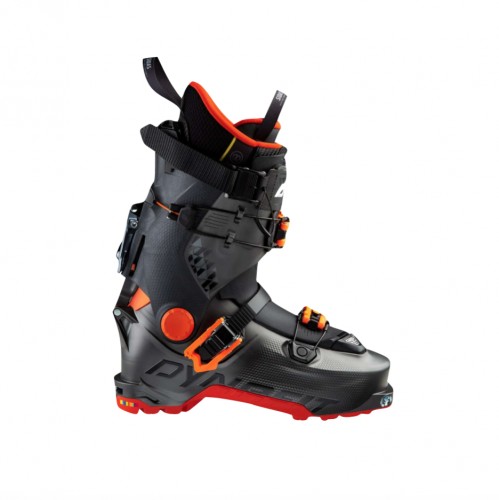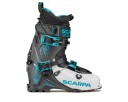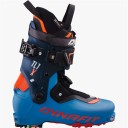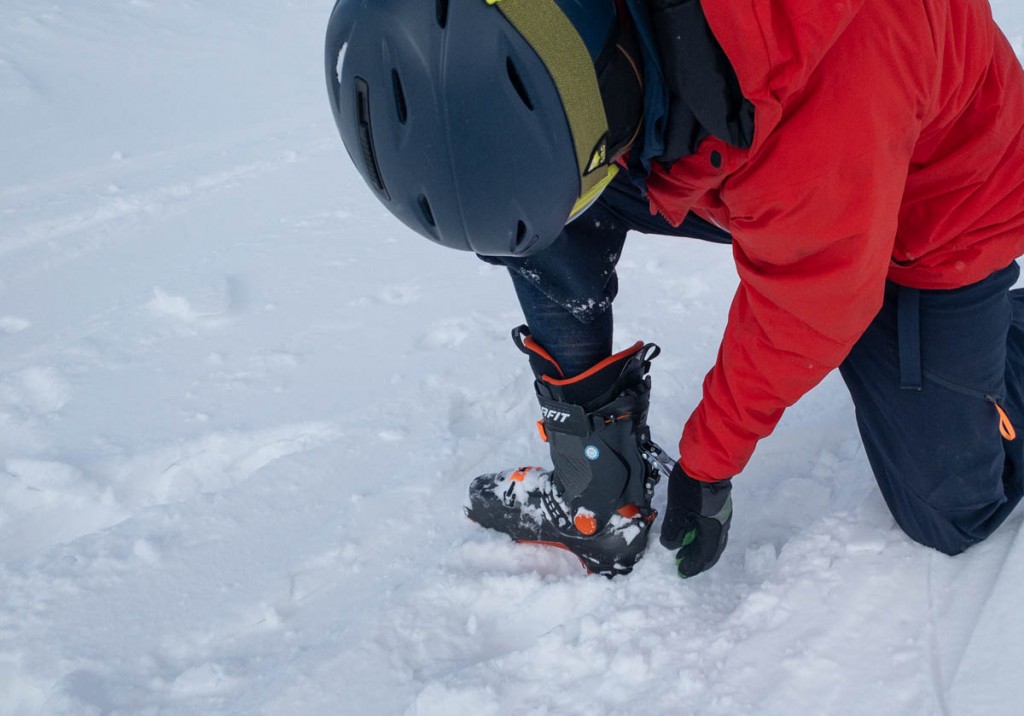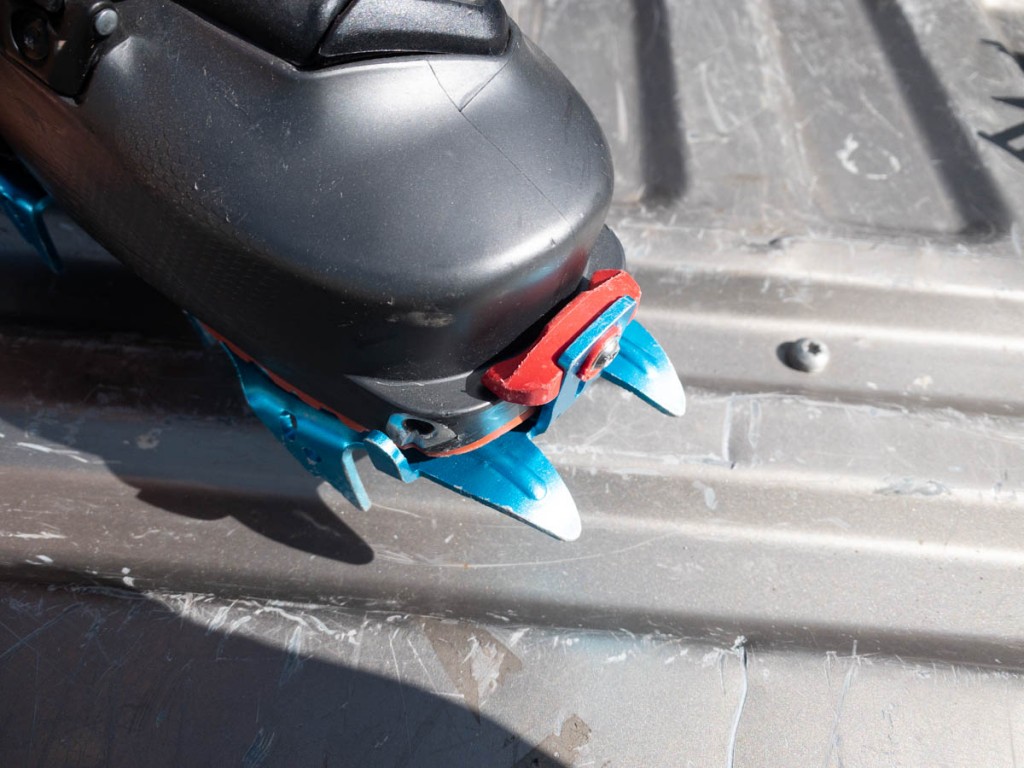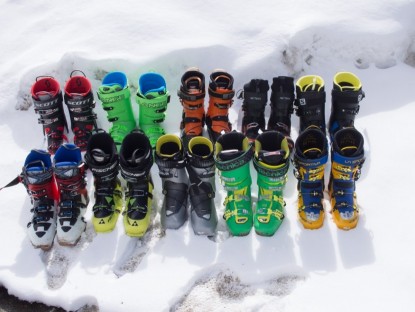Dynafit Hoji 130 Review
Our Verdict
Compare to Similar Products
 This Product
Dynafit Hoji 130 | |||||
|---|---|---|---|---|---|
| Awards | |||||
| Price | $449.98 at Backcountry Compare at 2 sellers | $629.96 at Evo Compare at 3 sellers | $711.71 at Backcountry Compare at 2 sellers | $508.74 at Amazon Compare at 4 sellers | $639.99 at Amazon Compare at 2 sellers |
Overall Score  |
|||||
| Star Rating | |||||
| Bottom Line | These are the best boots we know of to optimize downhill performance while being acceptable for all-day, all-terrain human powered up-hilling | This is an excellent ski boot that quietly entered the market and crushes the competition | For all-around skiing with a light and fast preference, this is a great choice | Well-balanced AT ski boot performance at a reasonable price point and with a fit that favors comfort and accommodates average to high volume feet | The best boots we know of that weigh around one kilogram and enable a one-move transition between tour and ski mode |
| Rating Categories | Dynafit Hoji 130 | Tecnica Zero G Tour... | Scarpa F1 LT | Scarpa Maestrale RS | Dynafit TLT X |
| Downhill Performance (35%) | |||||
| Uphill Performance (20%) | |||||
| Weight (20%) | |||||
| Comfort and Fit (10%) | |||||
| Warmth (10%) | |||||
| Ease of Use (5%) | |||||
| Specs | Dynafit Hoji 130 | Tecnica Zero G Tour... | Scarpa F1 LT | Scarpa Maestrale RS | Dynafit TLT X |
| Weight per Pair (Size 26.5) | 6 lbs 14 oz | 5 lbs 13 oz | 4 lbs 7 oz | 6 lbs 5 oz | 4 lbs 11 oz |
| Weight of One Boot Shell | 1251 g | 1119 g | 0809 g | 1180 g | 0867 g |
| Weight of One Stock Liner, No Footbed | 310 g | 204 g | 214 g | 252 g | 190 g |
| Weight of One Complete Boot, No Insole | 1561 g | 1323 g | 1023 g | 1432 g | 1057 g |
| Range of Motion (degrees) | 42° | 55° | 72° | 60° | 65° |
| Binding Compatibility? | Tech and DIN AT | Tech and DIN AT | Tech only | Tech and DIN AT | Tech only |
| Stated Flex Index | 130 | 130 | 95 | 125 | Not reported |
| Manufacturer Stated Last Width | 102 mm | 99 mm | 102 mm | 101 mm | 101 mm |
| Liner Design | Tongue | Wrap | Tongue | Tongue | Tongue |
| Shell material | Glass impregnated Grilamid | Grilamid | Grilamid, Carbon core | Carbon Grilamid | Grilamid |
Our Analysis and Test Results
The Dynafit Hoji 30 is a high-performance, downhill optimized ski touring boot that can be used for day-to-day ski touring and ski mountaineering. Across the market, backcountry ski boots get better and better. The best downhill performers get better at going uphill, the best uphillers go down better, and everything in the middle gets better in both directions. We're seeing leaps and bounds in recent years across the whole spectrum. With a one-move transition lever, acceptable cuff articulation, reasonable weight, and normal crampon compatibility, the Dynafit Hoji 130 is the best downhill skiing boot that we can recommend for day-to-day, all-around ski touring. As the best in this niche, we grant it one of our specialized awards. Just because it gets an award doesn't mean we unequivocally recommend it; this is basically the heaviest thing we can recommend for human-powered ski touring. Choose wisely.
Performance Comparison
Uphill Performance
Uphill performance is a function of cuff mobility and friction within that range. We measured the Hoji 130 to have 42 degrees of range of motion in its cuff. This is below average, as compared to the competition. However, it is enough for most circumstances. It seems that there is a critical threshold around 40-45 degrees. Less than that, and you really notice inhibited range. 40 degrees or so is all that most ski touring and ski mountaineering moves require. You can get more range in your boots, but your ankles don't really need that.
Within the range of the cuff, we look at friction and inhibition. The Hoji 130 pivots more freely than any close competitor. But realize that there are many more freely touring competitors. Especially if you entirely open up the upper buckles, the Hoji 130 largely stays out of your way on the way up normal skin tracks and boot packs. Opening the upper buckles like this negates some of the convenience of the touted "one move" transition. We expand more on that below.
Weight
We weighed a pair of size 26.5 Dynafit Hoji 130 boots to weigh 6 lbs 14 ounces. That's 1560 grams per boot. This is well above average. It seems that this amount of mass is required to get the downhill performance that these boots get. Of that 1560 grams, 1251 of them are in the shell. We'll save you some math and point out that the stock liner (no footbed) weighs 310 grams. You might be able to save 50-60 grams per foot by upgrading to an aftermarket liner. That aftermarket liner will also likely flex more freely in tour mode.
You don't pick these boots for their light weight. All the way through our review, we will point out that virtually every scoring metric is at the limit of what we'd consider suitable for day-to-day ski touring. You justify the weight of the Hoji 130 for its optimized downhill performance. In terms of weight alone, the Hoji is almost over the line into unacceptable for human-powered transport. 1560 grams is a lot for a ski touring boot. It redeems itself uphill, with the cuff mobility. To get that acceptable cuff mobility, you have to entirely undo the upper buckles. Doing so negates the efficiency of the "one move" transition feature. Could Dynafit save some weight, match the uphill efficiency and leave the downhill performance untouched by omitting the overcomplicated "one move" mechanism? We think so, and we'd only like the boot more.
Downhill Performance
These go downhill really, really well. They essentially match the performance of intermediate resort boots. That is amazing, given the uphill efficiency they provide. The support is stiff where you want, with a forward flex pattern that is evenly "progressive".
Choose these boots for downhill performance. The shell and cuff are carefully tuned to create a forward flex pattern that gradually and steadily increases in resistance as you flex your ankles. There are no hard stops, nor are there any reductions in the resistance. Lateral and rearward support are enough for the highest energy backcountry ski moves. Beginner to intermediate backcountry skiers (correlating to upper-level expert resort skiers…) will find forgiveness for lesser strength and technique. High end backcountry skiers will find support, sensitivity, and responsiveness for speeds and forces well above the risk tolerance of most sober backcountry users. These are downhill beast boots.
Comfort and Fit
The fit of the Hoji 130 is a little higher volume than average overall. The forefoot is about average in width, while the heel pocket is bigger than boots from Italian companies. Balancing out that greater space in the heel is an instep buckle that pulls your foot back in the shell better than a more "traditional" four buckle lay out. A cam-locked power strap pulls the cuff close to your lower leg for maximum advantage and engagement of that progressive flex.
Our testers noted a little pressure around protruding ankle bones and over the little toe. However, that was in entirely unmodified boots. Basic liner molding addressed this for average feet. High volume feet might require a punch around that little toe.
Warmth
On one particularly cold Teton high-pressure morning we were especially pleased with the insulating value of well-fit Hoji 130 tester boots. We love their downhill performance, but we're also a team that has many members that have readily adapted to light and ultralight ski touring boots. It is the insulating value of beefier boots that has really "sold" them to our touring dork constituency. More liner and shell material is simply warmer than less liner and shell material.
Appropriate fit is the number one warmth criteria. Boots that are too tight will inhibit blood flow. Inhibited blood flow is cold, to the point of being dangerous. Concerned for cold feet? First, get boots that fit appropriately. Looser is better for warmth, tighter is better for downhill performance. Tread that line carefully. After fit, warmth is mainly a function of liner and shell material thickness. Liners "pack out" and can be swapped out. Shell thickness is the really "fixed" variable of ski touring boot warmth, we've found. Here the mass of the Hoji 130 again works in your favor. The shells are thick and insulating.
Ease of Use
Here, basically, we ask how easy is it to get in, out, and between modes with the Hoji 130. First, as compared especially to other downhill optimized ski touring boots, the tongue-style construction of the Hoji is a joy to get in and out of. The overlap construction of close competitors is much harder to get on and off.
We have two different results from our examination of transitions with the Hoji boots. If you use them "as advertised", switching from up to downhill and vice versa is a one-move, one-lever process. This rivals "skimo" race boots and is absolutely remarkable. It can indeed work that way. However, if you use the boots this way, the uphill ankle mobility is much less and tips the balance past what we feel is acceptable for all-day, all-around human powered skiing. To justify lugging these heavy boots to the top of your line, you need to open the cuff buckles more than the "Hoji Lock" mechanism allows in "one move" configuration. Fret not, as this is easy enough to do and isn't any different, really, than transitions with "traditional" ski touring boots. When opened up like normal ski touring boots, the Hoji 130 tours so much better than any other boot that skis this well. Basically, our entire endorsement of the Hoji is predicated on ignoring use of the "one move" transition for anything but the shortest of uphill legs. If Dynafit eliminated the complication and weight associated with the one move transition we'd like them even more, as they'd be lighter by some amount.
Value
The Hoji 130 is almost exactly average in price. We're at a time in backcountry ski boot history when the highest performing boots aren't dramatically different in price, at full retail than the outliers. This is amazing. You can largely focus on fit and performance and throw your valuable dollars where they land.
Conclusion
All backcountry ski boots strike a balance. There is a long continuum between fully uphill optimized and fully downhill optimized. On that continuum, the Dynafit Hoji 130 represents the best downhill performance that we can recommend for all-day, all-around human powered skiing. This boot isn't for everyone, but some of you will jump all over it. If you know what's up and know you want absolute maximum downhill performance, look here. You won't be flying up the mountains in these shoes, but you won't suffer too too much either.


